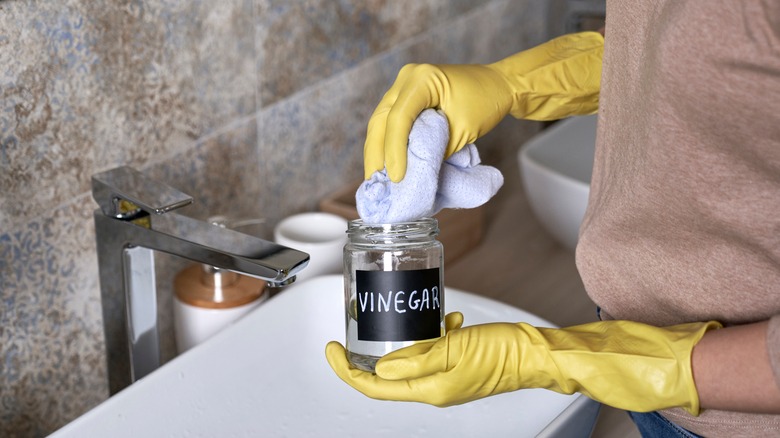Garden Trees, Shrubs & Vines
Christy Rae Ammons
While vinegar is an extremely versatile and effective cleaning product, it’s best to keep it away from ceramic tiles. Because of its higher level of acidity, vinegar can ruin the finish of tiles and destroy the grout holding them in place. Though ceramic tiles can sometimes stand up against this abrasive cleaner, damaging the grout remains a risk and will only lead to more problems if the grout does begin to break down. If the grout deteriorates, tiny pieces of it will be unknowingly spread around while cleaning, which can scratch your tiles.
Ceramic tile is common for flooring, walls, and backsplashes, and it’s a design investment you’ll want to keep up and maintain. One way to do this is to avoid using vinegar to clean it. This said, if you’ve used this cleaner on your ceramic a few times in the past, don’t panic — regular vinegar use is the biggest culprit for damaging tiles. Rather than mopping or scrubbing with vinegar, try using hot water and mild dish soap on the surface instead.
How vinegar affects ceramic

gpointstudio/Shutterstock
Once vinegar has penetrated the sealant on your tiles, they may not look as shiny or beautiful anymore, and they may appear faded. Ultimately, losing this layer of protection will make the surface susceptible to scratches and to damage. As for the grout, the acetic acid in vinegar will eventually cause the grout to wear down over time and become discolored. The grout may also crumble, leaving you with the task of restoring and resealing it.
Other abrasive cleaners, such as bleach and ammonia, are capable of damaging ceramic tiles as well. When cleaning your tiles, it’s a good idea to stay away from these products along with anything that may scratch the surface, such as scouring pads, steel wool, and magic erasers. If you’re already in the process of resealing or replacing your tiles, however, cleaning with vinegar is actually a great option, as it’ll help break down the grout and make the job a little easier. Otherwise, it’s best to steer clear of the multipurpose cleaner.
The best way to clean ceramic tiles
New Africa/Shutterstock
To safely and effectively clean your ceramic tiles, start by clearing away dust and debris by sweeping or vacuuming your floor. For backsplashes and tiled walls, try giving them a quick dusting. Then, mop with hot water and a gentle, nonabrasive cleaner that’s safe on stone. While sponge mops are convenient, they sometimes press the water into the grout, so using a cloth or a chamois mop is the safest option. After your tiles are clean, drying them with a clean rag rather than letting them air dry will help prevent water spots.
If your floors begin to look cloudy after a few washes, don’t worry. It’s most likely a residue left behind from your soap and can be removed with a nonabrasive all-purpose cleaner. For tiles that have become stained, try dabbing the area with a little hydrogen peroxide. However you do choose to clean your ceramic tile, just keep in mind that avoiding vinegar and other abrasive cleaners is an easy way to keep it in good condition.